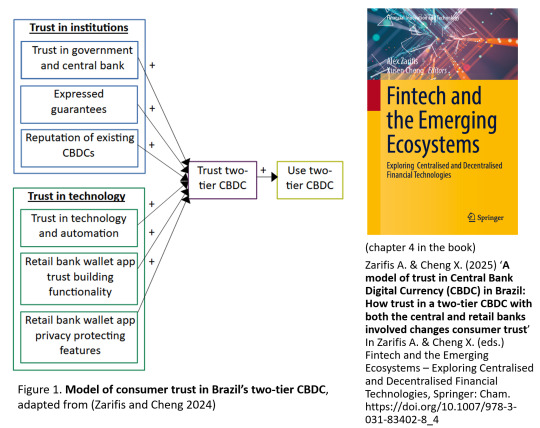#Technology adoption
Explore tagged Tumblr posts
Text







#aesthetic#pink#white aesthetic#white#pink and white#pink aesthetic#tech girl#technology adoption#Spotify#girl aesthetic#girl moodboard#computers#computer art#ai?#living ai aesthetic#sentient ai#electric dreams#computer#objectum#robot#idk what else to tag
52 notes
·
View notes
Text
#Network Readiness Index 2024#NRI 2024#Digital Transformation#Digital Infrastructure#Technology Adoption#Government Initiatives#India Digital Economy#AI and Digitalization#Telecommunications#Internet Connectivity#Digital Skills#E-governance#Innovation
1 note
·
View note
Text
The Role of Leadership in Championing Technology Adoption
When a new piece of technology enters the association ecosystem—whether it’s a CRM, AMS, AI tool, or collaboration platform—the organization’s success doesn’t rest solely on features, functionality, or even budget. The true determinant of adoption? Leadership. In any digital initiative, it’s the behaviors, mindset, and presence of leaders that set the tone for how the organization will respond.…
#association leadership#change management#digital transformation#empathy in leadership#innovation#organizational culture#technology adoption
0 notes
Text
The new centralised and decentralised Fintech technologies, and business models, transforming finance
(chapter 1 in the book)
The six AI focused models are (1) focus on less insurance services and disaggregation, (2) absorb AI into existing insurance model, (3) incumbent insurer expanding beyond model, (4) dedicated insurance disruptor, (5) tech company disrupting insurance, (6) disruptor not focused on technology with extensive user-base. The first three models involve organizations that are already active in the insurance sector. The last three models are new organizations using AI to start offering insurance services.
Reference: Zarifis A. & Cheng X. (2025) ‘The new centralised and decentralised Fintech technologies, and business models, transforming finance’ In Zarifis A. & Cheng X. (eds.) Fintech and the Emerging Ecosystems – Exploring Centralised and Decentralised Financial Technologies, Springer: Cham. https://doi.org/10.1007/978-3-031-83402-8_1

@Springer1842 #Fintech #crypto #blockchain #Bitcoin #AI #trust #businessmodel
0 notes
Text
2025 UTME Mass Failure Not Due to Student Intelligence Deficiency – Prof. Joy Ezeilo
Prof. Joy Ezeilo (SAN), a former United Nations Special Rapporteur on Human Trafficking and ex-Dean of Law at the University of Nigeria, Enugu, has applauded the Joint Admissions and Matriculation Board (JAMB) for acknowledging its role in the poor performance of candidates in the recently concluded 2025 Unified Tertiary Matriculation Examination (UTME). She expressed strong reservations about…
#2025 UTME#digital exam challenges#exam challenges in Nigeria#JAMB exams#Lmsint medai 2025#Prof. Joy Ezeilo#technology adoption#UTME mass failure
0 notes
Text
How a Cost Estimating Service Might Integrate with Smart City Infrastructure
The concept of smart cities is rapidly transforming urban environments, with technology-driven systems aiming to improve the quality of life, reduce costs, and enhance sustainability. As cities evolve, integrating advanced infrastructure that supports data collection, automation, and efficient resource management becomes essential. However, these developments often require significant investments, making cost estimation a critical part of the planning process. A cost estimating service can play a vital role in the successful integration of smart city infrastructure, providing essential financial insights and risk mitigation strategies for city planners, developers, and government entities.
The Role of Cost Estimating Services in Smart City Projects
Smart city projects involve a broad range of infrastructure components, from intelligent transportation systems to energy-efficient buildings and waste management networks. Each component presents its own set of challenges, particularly in terms of budget and resource allocation. A cost estimating service can break down these complex projects into manageable financial segments, offering detailed cost assessments for every phase of development.
For example, when building a smart transportation network, the cost estimating service can analyze various components like sensors, communication systems, and data analytics platforms. By providing detailed cost breakdowns, the service helps planners determine the financial feasibility of each technology, as well as its potential for long-term returns. Similarly, in the development of smart energy grids or green building technologies, accurate cost estimation ensures that projects are financially viable and sustainable over time.
Forecasting and Planning for Long-Term Costs
One of the primary benefits of integrating a cost estimating service into smart city planning is its ability to forecast long-term costs. While the initial investment in smart infrastructure may be high, these technologies often lead to substantial savings in the long run. For instance, smart lighting systems can reduce energy consumption by adjusting brightness based on real-time data, and smart water systems can optimize usage to reduce waste. A cost estimating service can project these long-term savings, allowing stakeholders to assess whether the benefits outweigh the initial costs.
By accurately forecasting long-term maintenance and operational expenses, the estimating service also helps planners build more comprehensive and sustainable budgets. This ensures that city governments or private developers are not only focused on the upfront costs but also prepared for ongoing expenses that are integral to maintaining smart infrastructure.
Risk Mitigation and Contingency Planning
Like any large-scale urban project, smart city infrastructure development comes with its own set of risks, including technological challenges, regulatory hurdles, and unexpected material price fluctuations. A cost estimating service integrates risk mitigation strategies into its financial models, helping stakeholders anticipate and prepare for potential issues.
For example, if a particular technology used in the smart city project faces delays in production or suffers from unforeseen compatibility issues, the cost estimating service can adjust the project budget to reflect these changes. Additionally, by considering factors like inflation and regulatory changes, the service can provide contingency plans that safeguard the project’s financial health.
Integration with Smart City Technologies
A significant advantage of utilizing a cost estimating service in smart city infrastructure projects is its ability to integrate with other smart technologies. For instance, the estimating service can be connected to sensors and real-time data streams from construction sites and infrastructure systems. This integration allows for the continuous monitoring of project costs, providing up-to-date financial assessments that adapt to the evolving needs of the smart city.
Furthermore, through the use of digital twins—virtual replicas of physical assets—cost estimating services can continuously track the performance of smart infrastructure once it is operational. By integrating these technologies, the estimating service can forecast maintenance costs and predict when upgrades or replacements will be necessary, ensuring that financial planning remains accurate over the lifetime of the infrastructure.
Supporting Sustainable Development Goals
As cities aim to meet ambitious sustainability goals, a cost estimating service is crucial for ensuring that smart infrastructure aligns with these objectives. For example, when planning for energy-efficient buildings, a cost estimating service can assess the cost of green building technologies such as solar panels, energy-efficient HVAC systems, and eco-friendly construction materials.
Additionally, estimating services can help prioritize projects that have the greatest environmental impact, such as sustainable water management systems or renewable energy grids. By factoring in the environmental benefits of smart infrastructure, the estimating service not only supports the financial viability of projects but also contributes to broader sustainability goals for smart cities.
Conclusion
The integration of smart city infrastructure presents an exciting opportunity for urban development, but it also brings a unique set of financial challenges. By utilizing a cost estimating service, city planners, developers, and governments can ensure that these projects are financially feasible, sustainable, and equipped to meet long-term objectives. With the ability to forecast costs, mitigate risks, and integrate with other smart technologies, cost estimating services are essential tools for the successful implementation of smart city initiatives. As urban areas continue to evolve, these services will play an increasingly important role in creating cities that are not only smart but also financially resilient and sustainable.
#Cost Estimating Service#smart city infrastructure#urban development#energy-efficient systems#budget planning#long-term costs#technology integration#smart transportation#sustainable development#risk mitigation#cost forecasting#construction budgeting#smart grid technologies#digital twins#green building#environmental sustainability#cost breakdown#resource optimization#financial planning#smart city technologies#construction cost analysis#smart water systems#energy savings#technology adoption#future cities#infrastructure investment#project feasibility#operational expenses#regulatory changes#contingency planning
0 notes
Text
Common themes these days are change and technology adoption, driven by advancing AI. A key takeaway is adapt or face obsolescence. While resisting harmful changes is necessary, embracing beneficial ones is crucial for progress. Just avoid mediocrity and bad practices.
0 notes
Text
The Role of Technology in Driving Business Innovation.
Sanjay Kumar Mohindroo Sanjay Kumar Mohindroo. skm.stayingalive.in Explore how technology drives business innovation. Real stories, practical tips, and debates that spark fresh thinking. Join the conversation. A Compelling Hook Technology is the spark behind many breakthroughs. It helps companies grow, adapt, and stand out. I have watched organizations move from simple processes to…
#AI And Automation#Balanced Approach#Business Innovation#Cross-Functional Teams#Data-Driven Decisions#digital transformation leadership#Employee Empowerment#Ethical Tech#Global Reach#Innovation Debate#Leadership Insights#News#Sanjay Kumar Mohindroo#Tech Culture Shift#Tech Strategy#Technology Adoption#User-Centered Design
0 notes
Video
youtube
India Is Becoming a GLOBAL TECH POWER Due to UPI? India is rapidly emerging as a global tech powerhouse, and it's all thanks to the revolutionary Unified Payments Interface (UPI)! In this video, we explore how UPI has transformed the country's digital payment landscape, making it an attractive destination for tech giants and startups alike. From increasing financial inclusion to boosting economic growth, we delve into the impact of UPI on India's tech ecosystem. Join us as we discuss the future of fintech in India and how UPI is playing a crucial role in shaping the country's digital destiny.
#Unified Payments Interface#Cashless Transactions#technology adoption#digital revolution#financial technology#cashless economy#will india become a superpower india#india today news#indian economy#india news in hindi#india economic growth#how india is becoming the global super power#india tech growtheconomics of india#why is india growing so fasteconomic growth india#economy india#indian economic growth
0 notes
Text
IMPLEMENTING ORGANIZATIONAL CHANGE MANAGEMENT STRATEGIES IN HEALTHCARE INSTITUTIONS
IMPLEMENTING ORGANIZATIONAL CHANGE MANAGEMENT STRATEGIES IN HEALTHCARE INSTITUTIONS 1.1 Introduction Organizational change is inevitable in healthcare institutions due to the dynamic nature of the industry, which is influenced by technological advancements, regulatory shifts, evolving patient needs, and economic pressures. Effective change management is critical to ensuring that healthcare…
#Agile methodologies#Change Impact Assessment#Change Leadership#Change management#Change Readiness#Communication Strategy#Continuous improvement#Cultural Change#Employee Buy-In#Healthcare transformation#Implementation Framework#IMPLEMENTING ORGANIZATIONAL CHANGE MANAGEMENT STRATEGIES IN HEALTHCARE INSTITUTIONS#organizational change#Patient-centered care#Performance metrics#PROCESS IMPROVEMENT#Project Management#Resistance to change#Stakeholder engagement#TECHNOLOGY ADOPTION#Training And Development
0 notes
Text
DPW & COMDEX
How is DPW different than COMDEX?
Here is a link to a post I wrote earlier today on DPW – https://bit.ly/4d8InHJ I like DPW, but watching their new video and now reading your post above, Michael Lamoureux, my uneasy critique of the conference video brought to mind the following: “In 2000, major companies such as IBM, Apple, and Compaq (now merged with Hewlett-Packard) decided to discontinue their involvement with COMDEX to…
0 notes
Text







#gender#but in a boy way#aesthetic#pastel#pastel aesthetic#light blue#light blue aesthetic#light blue moodboard#blue y2k#y2k#y2k aesthetic#tech#technology#technology adoption#detroit become human#robots#robot#robot gender#robot oc#robot art#android#androgynous#y2k style#cyber cutie#cybercore#cyber y2k
72 notes
·
View notes
Text
Technology Upgrades Are Not Enough: Why People, Training, and Mentorship Matter More
In an era where AI, automation, and digital transformation dominate business conversations, organizations are rushing to upgrade their technology. But here’s the hard truth: Technology alone doesn’t guarantee success. It’s the people using it that determine whether an upgrade is a game-changer or just another expensive, underutilized tool. A recent white paper on AI transformation highlights…

View On WordPress
#AI readiness#change management#digital transformation#employee training#mentorship programs#organizational culture#tech implementation#technology adoption
0 notes
Text
A model of trust in Central Bank Digital Currency (CBDC) in Brazil: How trust in a two-tier CBDC with both the central and retail banks involved changes consumer trust
(chapter 4 in the book)
This research models the Brazilian consumer’s trust in their two-tier CBDC, where the central bank and the retail banks retain their current role. The six ways to build trust in a CBDC, identified by previous research in a different region, are supported for this case also. These are: (a) Trust in government and central bank offering the CBDC, (b) expressed guarantees for those using it, (c) the favourable reputation of other active CBDCs, (d) the CBDC technology, the automation and limited human involvement necessary, (e) the trust building features of the retail bank’s CBDC wallet app, and (f) the privacy features of the retail bank’s CBDC wallet app and back-end processes.
Reference: Zarifis A. & Cheng X. (2025) ‘A model of trust in Central Bank Digital Currency (CBDC) in Brazil: How trust in a two-tier CBDC with both the central and retail banks involved changes consumer trust’ In Zarifis A. & Cheng X. (eds.) Fintech and the Emerging Ecosystems – Exploring Centralised and Decentralised Financial Technologies, Springer: Cham. https://doi.org/10.1007/978-3-031-83402-8_4

@Springer1842 #Fintech #Finance #Banking #CBDC #crypto #blockchain #Bitcoin #AI #trust #Brazil
0 notes
Text
Unlocking the Potential: Embracing Small Business Ecommerce!
When it comes to small business ecommerce, several crucial points merit your consideration. By integrating ecommerce options into your business website, you open doors for customers both near and far, granting them the opportunity to purchase your services and products with ease, regardless of their location.
#Digital Commerce#Entrepreneurship#Business Growth#Ecommerce Strategies#Marketing Tactics#Customer Experience#Digital Transformation#Technology Adoption#Online Presence
0 notes
Text
Generative AI in Retail Market is ready to surge USD 14,619.7 million by 2033 at a CAGR of 38.1%.
Market Overview
The Generative AI in Retail Market is witnessing an exponential growth trajectory, driven by technological advancements and changing consumer preferences. According to market projections, the Global Generative AI in Retail Market is poised to reach a value of USD 801.3 million by the end of 2024, with further estimations indicating a market value of USD 14,619.7 million by 2033, boasting a remarkable CAGR of 38.1%.
Generative AI in Retail Market Growth Analysis
Customized Services for Enhanced Consumer Experience
Generative AI in the retail sector is reshaping the way businesses interact with consumers. By leveraging advanced algorithms, Generative AI analyzes consumer behavior and preferences from various platforms, including social media, to deliver personalized recommendations and experiences. This level of customization not only enhances consumer satisfaction but also drives sales and fosters brand loyalty.
Optimization of Logistics and Supply Chain Operations
In addition to personalized services, Generative AI plays a pivotal role in optimizing logistics and supply chain operations within the retail industry. By accurately forecasting demand and streamlining inventory management processes, retailers can minimize unnecessary expenditures and ensure smoother operational workflows.
Visit for a free request sample@ https://dimensionmarketresearch.com/report/generative-ai-in-retail-market/request-sample/
Fast-paced Growth in Various Industries
Across industries such as retail, automotive, communication, and healthcare, Generative AI is making significant strides. However, the retail sector stands out as one of the fastest-growing industries, fueled by rising disposable incomes and evolving consumer needs worldwide. The emergence of Generative AI in retail underscores its importance in providing retailers with invaluable consumer insights, enabling them to tailor products and services to meet individual preferences effectively.
Key Takeaways
Market Growth
The Generative AI in Retail Market is poised for substantial growth, with a projected increase of USD 13,543.9 million at a CAGR of 38.1% during the forecasted period from 2025 to 2033.
Leading Technologies
Variational Autoencoders (VAEs) are expected to lead the market in 2024 and maintain dominance throughout the forecasted period, owing to their versatility and applicability in the retail sector.
Preferred Deployment
Cloud deployment is anticipated to capture the largest revenue share in 2024, offering scalability, affordability, and enhanced data accessibility to retailers.
Primary Application
Product Design & Development is expected to lead the Generative AI in Retail market in 2024, driving innovation and efficiency in the design processes within the retail industry.
Dominant End User
The fashion and apparel industries are poised to secure the largest revenue share in 2024, emphasizing the significant impact of Generative AI on consumer-centric sectors.
Use Cases
Personalized Product Recommendations
Generative AI analyzes customer preferences and behaviors to deliver tailored product recommendations, thereby enhancing the shopping experience and driving sales conversion rates.
Virtual Try-On and Visual Merchandising
Retailers leverage Generative AI to create virtual try-on experiences, enabling customers to visualize products before purchase. Additionally, AI-powered visual merchandising optimizes store layouts for better appeal and sales.
Content Generation and Marketing
Generative AI automates the development of marketing content, including product descriptions and social media posts, enabling retailers to attract and retain customers more efficiently.
Inventory Management and Forecasting
Generative AI algorithms analyze historical sales data and market trends to generate accurate demand forecasts, enabling retailers to optimize inventory levels and reduce operational costs.
Buy This Premium Report Here@ https://dimensionmarketresearch.com/checkout/generative-ai-in-movies-market/
Market Dynamics
Driving Factors
Generative AI models enhance online shopping experiences by providing digital shelves, predictive styles, and personalized recommendations. Additionally, AI-powered assistants improve in-store experiences by providing personalized assistance and optimizing staff efficiency.
Opportunities
The integration of AI-driven robots in retail operations presents significant opportunities for market expansion. As retailers adopt robotic automation, new avenues for innovation and improved customer experiences emerge.
Restraint Factors
Cost considerations and complexity hinder the widespread adoption of Generative AI in the retail sector. Overhauling traditional operational systems and managing implementation complexities pose challenges for retailers, particularly small-scale businesses.
Trends
Virtual try-on experiences and AI-generated content are driving trends in the retail industry, offering convenience and engagement to consumers. Additionally, Generative AI is revolutionizing visual merchandising by optimizing store layouts and product placements.
Research Scope and Analysis
By Technology
Variational Autoencoders (VAEs) and Generative Adversarial Networks (GANs) are expected to dominate the market, offering retailers versatile applications for data generation and anomaly detection.
By Deployment
Cloud deployment is favored for its scalability and affordability, enabling retailers to integrate Generative AI solutions seamlessly.
By Application
Product Design & Development and Visual Merchandising are poised to make significant impacts on the retail industry, driving innovation and efficiency in design processes and store layouts.
By End User
The fashion and apparel industries, along with consumer electronics, are expected to be primary beneficiaries of Generative AI, fostering creativity and personalized experiences.
Regional Analysis
North America
North America is expected to lead the Generative AI market in retail, driven by technological advancements and high consumer demand for personalized experiences.
Asia Pacific
The Asia Pacific region is witnessing rapid growth in Generative AI adoption, fueled by population growth and technological advancements in retail operations.
Competitive Landscape
Prominent Players
Key players in the global Generative AI in Retail Market include IBM, Adobe, Amazon Web Services, Google, Intel, Microsoft, NVIDIA Corp, Oracle Corp, Infective AI, and Anthropic.
Recent Developments
Conclusion
Generative AI is revolutionizing the retail industry, offering personalized experiences, streamlined operations, and innovative solutions. As the market continues to evolve, businesses must embrace these advancements to stay competitive and meet the ever-changing demands of consumers.
#Generative AI#Retail Market#Artificial Intelligence#Personalized Recommendations#Visual Merchandising#Inventory Management#Consumer Behavior#Market Trends#Technology Adoption#Cloud Deployment#E-commerce#Customer Experience#Forecasting
0 notes